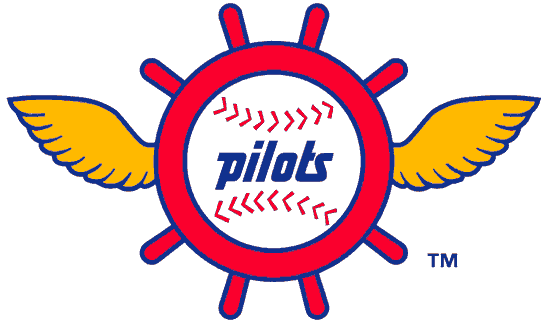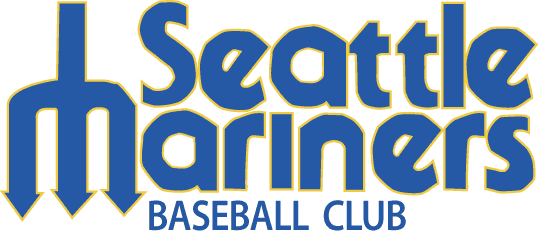The 1967 Major League Baseball winter meetings gave life to the Seattle Pilots, owned by former Cleveland Indians owner William R. Daley and former Pacific Coast League president Dewey Soriano. They entered the American League along with the Kansas City Royals as part of a hasty round of expansion triggered by the Kansas City Athletics' move to Oakland. Senator Stuart Symington of Missouri had threatened to have baseball's antitrust exemption revoked unless Kansas City was promptly granted another team. They were originally slated to begin play in 1971, but Symington would not accept the prospect of having Kansas City wait three years for another team and pressured MLB to have the Royals and their expansion brethren (the Pilots and the National League's San Diego Padres and Montreal Expos) ready for play in 1969. Until a new stadium (what would become the Kingdome) was ready, the Pilots would play at Sick's Stadium, the home of the city's longtime PCL franchise, the Seattle Rainiers.
Manager Joe Schultz actually thought they could finish third in the newly formed, six-team American League West even though they had been badly out drafted by the Royals. However, to the surprise of almost no one outside Seattle, the Pilots were terrible. They won their very first game, and then their home opener three days later, but only won five more times in the first month and never recovered. They finished last in the West with a record of 64–98. In a sign that the Pilots were doomed for failure, Lou Piniella a 26-year-old rookie was traded at the end of spring training. Piniella was sent down a few weeks earlier despite having strong numbers in spring games. The problem was that Pilots manager Joe Schultz did not like Piniella, who was set to make $175, 000. The Pilots did not want to pay him, so they got rid of him. Piniella would end up with the American League's other 1969 expansion team the Kansas City Royals, and he would win that year's Rookie of the Year.
However, the team's poor play was the least of the Pilots' problems. The team's ownership was badly under capitalized; Soriano hadn't been able to afford the franchise fee and had to ask Daley to help pay it. In return, Daley got 47 percent of the team's stock—the biggest single share—and became chairman of the board. Also, Sick's Stadium was completely inadequate even as a temporary facility. While a condition of MLB awarding the Pilots to Seattle was that Sicks had to be expanded to 30,000 seats by the start of the 1969 season, only 17,000 seats were ready because of numerous delays.
The scoreboard was not even ready until the night before opening day. While it was expanded to 25,000 by June, the added seats had obstructed views. Water pressure was almost nonexistent after the seventh inning, especially with crowds above 10,000. Only 677,944 fans came to see the Pilots that year; they never attracted a crowd even near capacity. On October 2nd, 5,473 Pilot fans, came to see the season finale against the Oakland A's. They would lose 3-1 and finish in last place and 33 games out of first. One bright spot was Harper who would lead the majors with 73 stolen bases. Much of the story of that season is told in pitcher Jim Bouton's classic baseball book, Ball Four ( a must read for all baseball fans).
By the end of the 1969 season, the Pilots were almost out of money, and they wouldn't survive long enough to move into their new stadium without new ownership. No credible offers surfaced from Seattle interests at first, however. Under these circumstances, Soriano was initially very receptive to an offer from a Milwaukee-based group headed by car salesman Bud Selig. Selig had been a minority owner of the Milwaukee Braves and had led unsuccessful efforts to keep them from moving to Atlanta, and had been working ever since then to bring the majors back to Milwaukee. During Game 1 of the World Series, Soriano agreed to sell the Pilots to Selig for $10 million to $13 million. Selig would then move the team to Milwaukee. However, under strong pressure from Washington state officials, MLB asked Soriano to try to find a local buyer first.
Unfortunately, one local deal collapsed when the Bank of California called a loan for start-up costs, and another bid was turned down out of concern it would devalue the other teams. With no other credible offers on the table, the owners approved the sale to Selig's group. Selig had already announced plans to rename the team the Brewers, a name that had been used by past Milwaukee baseball teams dating to the 19th century. However, legal action kept Selig from formally taking control, and dragged out through the winter.
Opening day at Sick's Stadium, 1969
The matter still hadn't been resolved by the end of spring training, leaving new manager Dave Bristol and the players unsure of where they would play. The team's equipment sat in Provo, Utah while the drivers awaited word to drive to Seattle or Milwaukee. After the state filed an injunction to stop the sale on March 17, Soriano and the Pilots filed for bankruptcy to forestall any more legal action. After general manager Marvin Milkes testified that the Pilots didn't have enough money to pay the players, the bankruptcy judge granted the Pilots' filing on April 1 and ruled the move to Milwaukee in order. MLB would not return to Seattle until 1977, when the Mariners entered the AL, along with the Toronto Blue Jays. One player from the 1969 Pilots would come back to the new team in 1977. Former Pilot Diego Segui would be a member of the inaugural Mariners. Diego would have the honor of throwing the first pitch in Mariners history. When the Kingdome would close in 1999, he would also have the honor of throwing the last pitch. His son David would also play for the Mariners, making them one of two father-son combos to play for the Mariners.some information borrowed and inspired by Wikipedia and seattlepilots.com











4 comments:
This is a really interesting read because I finally picked up Ball Four, which is as funny and insightful as everyone says. Keep it up!
Send off a couple e-mails to your nosaint address. Let me know if you got them. One's about that trade, the other's about something else I wanted to mention.
Steve
"His son David would also play for the Mariners, making them one of two father-son combos to play for the Mariners."
I wonder who the other one was? ;)
Lou Pinella made less than 20K that year. The Pilots PAID 175K to purchase his contract. In 1969 only four MLB players made over 100K. Ball Four helped change that.
Post a Comment